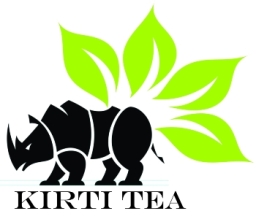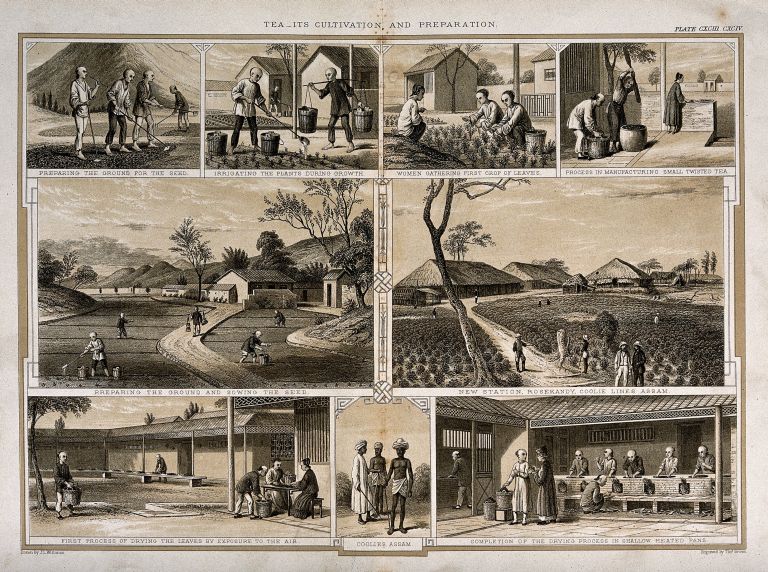Assam Tea, News & Update, Tea, Tea Business
How The British Discovered Tea In Assam
Robert Bruce, a Scotsman who came to India to supply weapons, discovered that Assamese tea was better than Chinese tea.
listening tea leaves are a ubiquitous sight in upper Assam where large swathes of land are set aside for tea plantations. As a result, tea farming and exports are abooming industry in the State. It’s a significant source oflivelihood.
While it is well known that the British were the first to venture into the jungles of Assam to discover tea, the story of the first explorer into these remote forests is fascinating.
In 1765, when the Mughals granted the British the Bengal Diwani(right to collect revenue), Assam was ruled by the 500-year old Ahom dynasty, a lineage that traced its origin to the Yunan province in China.
The Ahoms ruled over a vast territory in Assam, one of the few empires to have successfully evaded the onslaught of the Mughals for centuries.The British, looking to import tea from China, found it to be an
expensive proposition, and started exploring other sources. But Assam of the time was an unreachable destination, lying outsidethe control of both the Mughals and early British India. As Governor General Lord Cornwallis in 1792.
“We know little more of the interior parts of Nepal and Assam than those of the interior parts of China. “
From 1817 to 1825, the neighbouring Burmese attacked an already fractured Ahom kingdom, leaving rampant looting and horrific bloodshed on their trail. In helping the Ahoms defend themselves against the marauding Burmese, the British came closer to Assam and finally annexed it in 1826 with the Treaty of Yandaboo that ousted the Burmese.
During the wars with the Burmese, a Scottish officer Robert Bruc supplied arms and troops to the Ahom king, Chandra Kanta. Bruce decided to stay on in Assam permanently, meticulously recording his observations in reports that he despatched to his brother,Charles.
Although the world came to know of tea first from the Chinese, it is a fact that Assamese tribes like the
Singphos were used to drinking tea prepared in their native ways. This tea flowered wild in Upper Assam and was popular there; the locals believed it had memory-boosting powers. Beesa Gam, a local Singpho leader, and the Assamese nobleman Maniram Dewan were instrumental in helping Robert Bruce search for tea.
By that time, the British had already made several unsuccessful efforts at trying to plant tea. Tea drinking had already become the ‘cup that cheers’ and as one tea connoisseur put it in the 18 century:
” Thank God for tea!
What would the world do without tea?
How did it exist?
I am glad, I was not born before tea. “
Robert Bruce eventually discovered the tea plants growing in the Upper Assam jungles with Beesa Gam’s help in 1821. Robert and his brother Charles were guided to the Singphos by Maniram Dewan, a loyal supporter of the Company in the initial years. Charles mentions him in his accounts as “a Dewaniah who assisted me to hunt out these (tea) tracts, and who was well acquainted with the leaf, as he had been in the habit of drinking tea during his residence with the Singphoes.” However, the Dewan was subsequently hung until death for conspiring against the British during the 1857 revolt.
In 1824, Charles planted, for the first time, tea saplings in front of his bungalow in Sadiya in Upper Assam as an experiment. In 1828, seeds were imported and planted in Joypur and later at Dinjoy (Chabua) in Upper Assam. When their efforts bore fruit, Charles sent the first batch of tea leaves to the first commissioner of
Assam, David Scott.
In 1833, Lord Bentinck’s ‘Tea Committee’ proclaimed that tea was “beyond all doubt indigenous to upper Assam, a discovery by far the most important and valuable that has ever been made on matters connected with the agricultural or commercial resources of this empire.” The British then appointed Charles to survey Assam and report on its tea-growing potential.
In a report dated 10 June 1839, Charles mentions that among the districts of Muttock and Singpho, between deplorable conditions where opium-addicted natives lived, he found teaplants growing. Charles, excited with his discoveries, wrote:
“I feel convinced the whole of the country is full
of tea…I found…small hills…covered with teaplants.
The flowers of the tea on these hills are of a
pleasant delicate fragrance, unlike the smell of our
other tea-plants; but the leaves and fruit appear the
same. This would be a delightful place for the
manufacture of tea, as the country is well
populated, has abundance of grain, and labour is
cheap.”
After the tea plants were formally authenticated, the British quickened the process of acquiring and planting tea. They started an experiment in Upper Assam of cultivating tea in nurseries with seeds and plants smuggled in from China. Charles Bruce headed this ambitious project.
Yet, true to their colonial instincts, they depicted the Assamese as ‘near savages.’ The British administrators and botanists, who still respected the Chinese tea knowledge, were convinced that Chinese experts and their tea were necessary to kick-start the Indian tea industry.
To this end, Lord Bentinck suggested that “an intelligent agent should go down to Penang and Singapore, and…concert measures for obtaining the genuine plant, and the actual (Chinese) cultivators… who shall then be employed, under the promise of liberal remuneration to carry on the cultivation.
” Accordingly, Chinese cultivators and artisans were brought to India to make a new hybrid variety of the ‘wild’ Assam plant with the cultivated Chinese variety.
In 1835, the first tea cultivation on a commercial basis was carried out in Chabua. England received the first tea chests from Assam in 1838 and soon acknowledged that the Assam tea was superior to the
Chinese variety.
By 1844, large volumes of tea were being exported to Britain. In its wake, Assam never remained the same. Sprawling tea gardens soon covered the region. Waves of migrants moved into Assam, a source of cheap labour, from neighbouring areas. Little would Robert, or his brother Charles have realised in those trying times
that their pioneering efforts would eventually take Assamese tea across the oceans and continents, reading its aromatic flavour for connoisseurs to savour

